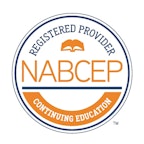Solar Executive MBA Training

About this course
This course is included in this bundle
Course outline
Welcome • 4 assignments
Orientation Materials
Module 1 • 17 assignments
Development Plan and Project Model Overview
The six critical items are: site control, permitting, power offtake, project financing, interconnection, and engineering. We've discovered that these critical items are often overlooked or not properly prioritized. By not combing through this process early, many solar integrators, developers, and finance partners end up chasing too many deals, draining resources that could be put to better use.
The week's homework assignment is to create a project development plan for a sample scenario, including as many relevant details as possible.
Module 2 • 20 assignments
Sizing a Distributed Generation System and Economic Modeling Basics
The second lesson covers economic modeling. We cover some basic commands, formulas and functions within Excel that will enable us to build a successful financial model of our proposed PV system. Once we are comfortable with these basic commands, formulas, and functions, we will graduate to our demo solar PV project model. Using this fully functional model as our guide, we will take a close look at planning and structuring a solar PV model, including some basic good housekeeping practices and organization.
We will then take an in-depth tour to see how the individual modules and worksheets come together to create a look at the unstructured economics of a project and how a partnership flip works for such a project. We will focus for a close up look at the debt module, depreciation module and calculation of internal rate of return (IRR) and net present value (NPV).
Module 3 • 31 assignments
Risk Management and Budgeting
As you continue to develop your understanding of how to model the project economics using your completed (or in-process) demo model, you will look at the various project incentives and subsidies available to solar projects around the country. There are four main categories: federal tax, state tax, direct incentives, and solar renewable energy certificates (SRECs). We will also familiarize ourselves with the Database of State Incentives for Renewables & Efficiency (DSIRE) and touch upon feed-in tariffs. To conclude the week, we will consider how how prospective investors value a project and the implications of their methods.
Module 4 • 22 assignments
Request for Proposal (RFP) and Financing Strategies
Module 5 • 20 assignments
Contract Document Explanation - Video Lessons - Why, What, How and Who Explained
This week, we will provide sample documents for your reference, walk you through the essential elements of the documents, and share anecdotes and perspectives about what they are and how you will use them.
An outgrowth of your development plan must be a resource management plan. An important part of a resource management plan is recognizing what work is best done internally versus externally. We'll spend some time discussing how to manage employees and contractors. This is a critical consideration because it's how you'll spend all of your time once you get a project approved.
Module 6 • 6 assignments
Putting It All Together
Conclusion • 5 assignments
Feedback and Additional Resources
Don't forget that you'll have access to the course materials for 12 months after the session ends. Feel free to come back as much as you like to continue learning, and please stay in touch. After your year of access expires you can optionally extend access with a HeatSpring Membership.
Continuing Education Units
Approved for the following CEUs
- NABCEP Advanced Credit Hours
- NABCEP JTA
- NABCEP RE Elective
- NABCEP PV Associate Renewal
NABCEP Registered Provider

This course counts towards the training requirements for taking NABCEP professional certification exams and CEUs for renewing all certifications.
Instructors

Keith Cronin
What kind of world do you want to live in? Two plus decades of cleantech experience on our journey together to sequester carbon in meaningful ways. Blessed with a multidisciplinary skill set of development, finance, business, and deep connections globally. The road to your destiny is often a curved line. After a decade on the East Coast, it catapulted me to Hawaii to...

Chris Lord
Christopher J. Lord is the Managing Director of CapIron, Inc., a firm focused, among other things, on helping clients plan, structure and close financings involving renewable energy projects, including Distributed Generation and Utility-Scale Projects. Mr. Lord graduated from Cornell Law School, and practiced corporate law in firms, and in-house, for over 25 years. He...
Frequently asked questions
Full FAQHow does this course work?
How is this course different from Financial Modeling for Solar PV Projects?
How long do I have access to the materials?
Does this course cover utility scale solar developments?
The course covers all of the principles behind utility scale and distributed generation solar. The models scale equally between them because the principles remain constant. That said, utility scale solar prices tend to be much lower (benefiting from the larger economies of scale), but this is reflected through management of the various input variables.
The course and materials really are infinitely expandable.
Is this course relevant for international students
For the most part, we won’t cover the specific subsidies and tax treatments for countries other than the US, but the bulk of the material is readily applicable to all solar projects regardless of the country.
Is there a certificate of completion?
How does the course work, do I have to be present at specific times, what if I miss a class?
You get access to all of the content as soon as you enroll and can work ahead. After the 6-week instructor led session ends, you'll continue to have access to the full course content for a full year and can complete the course on your own and print your certificate of completion, you just won't have the instructors' guidance after the session ends.
